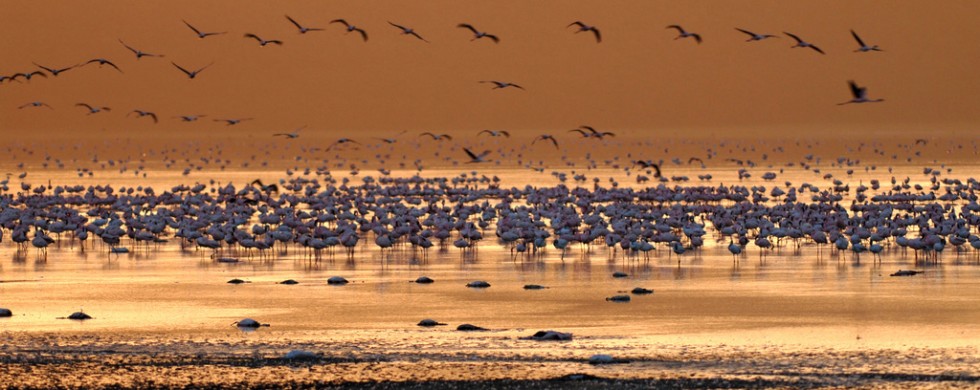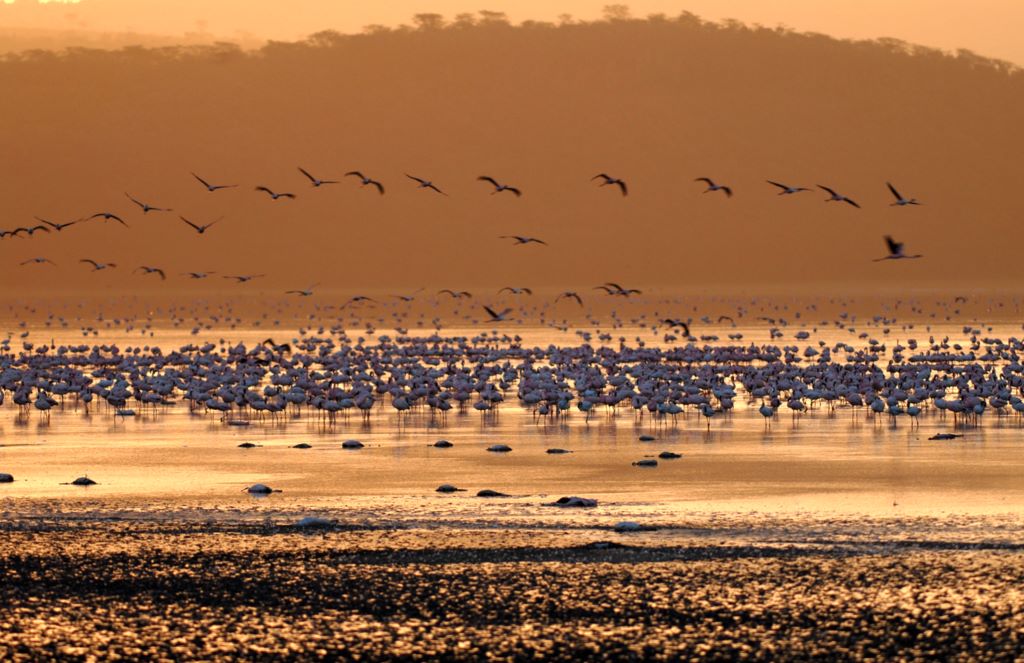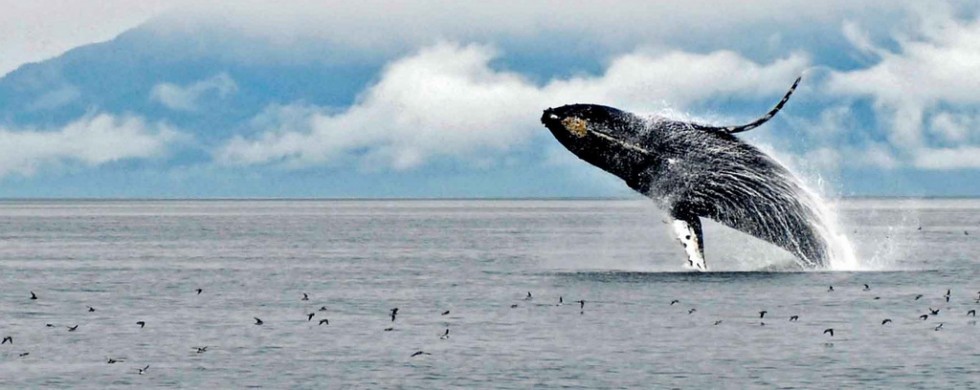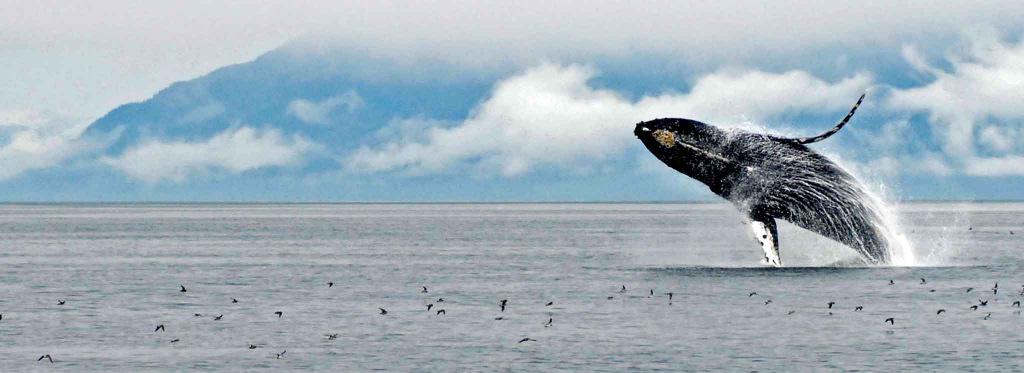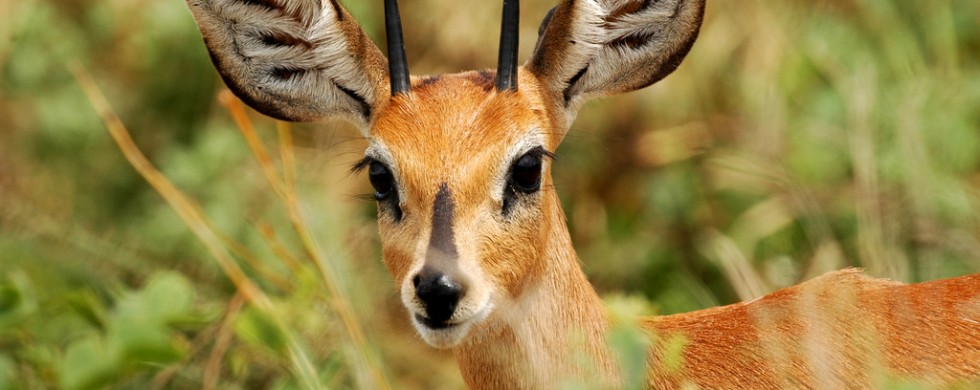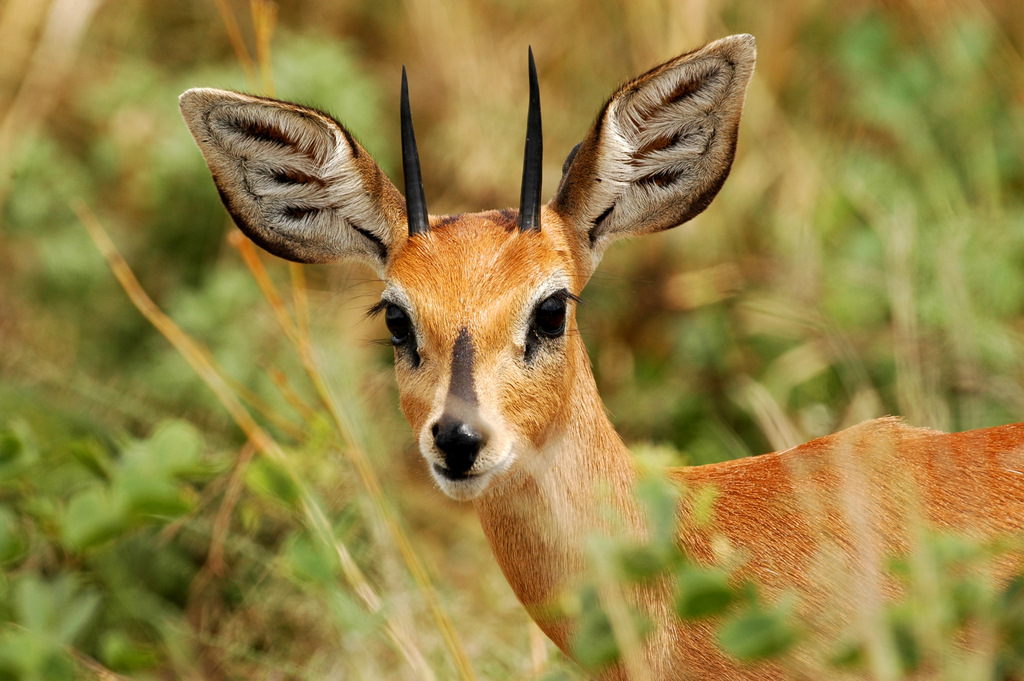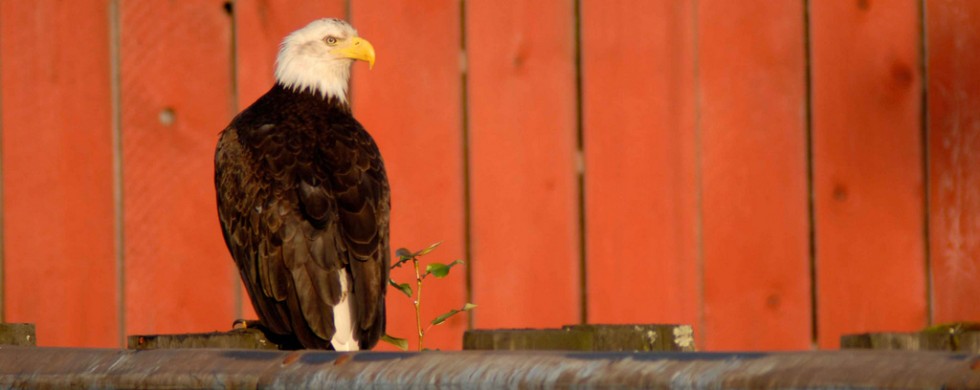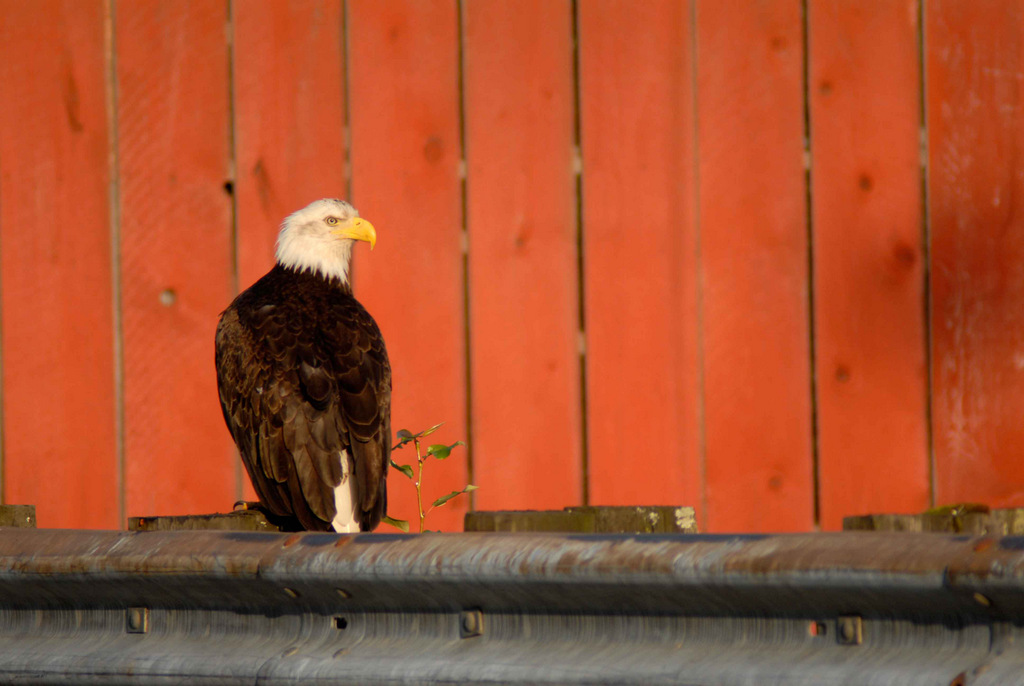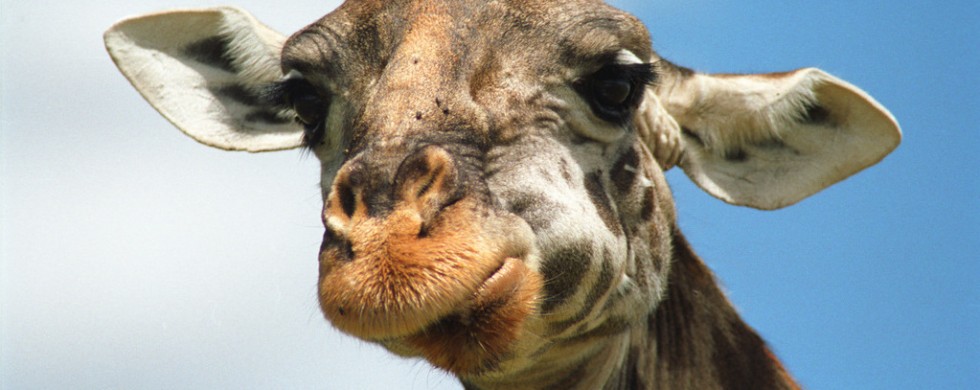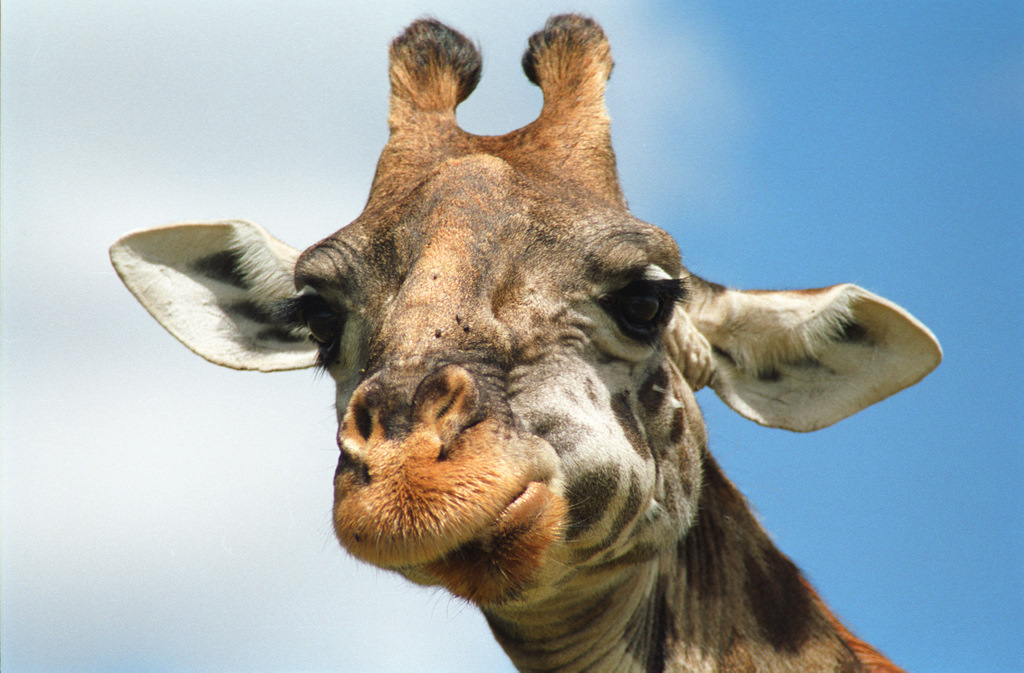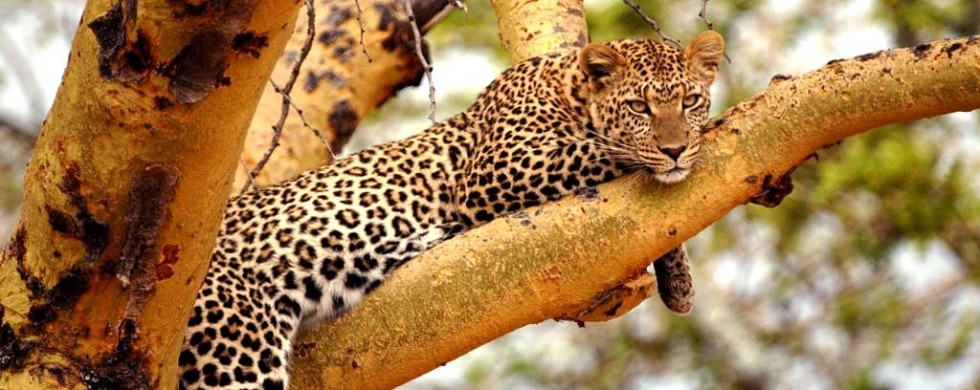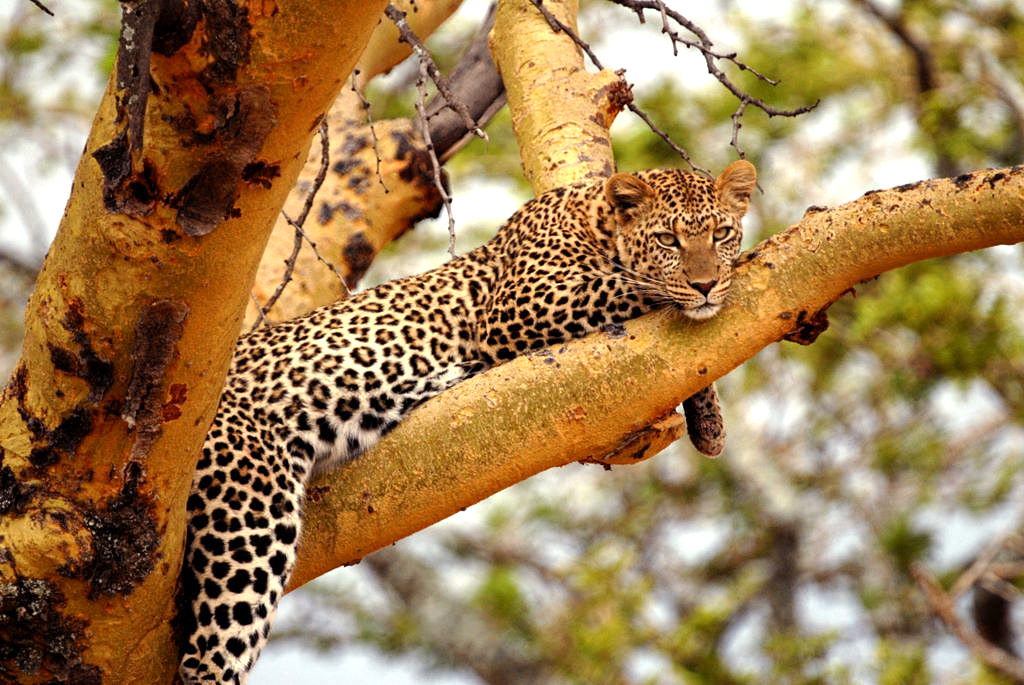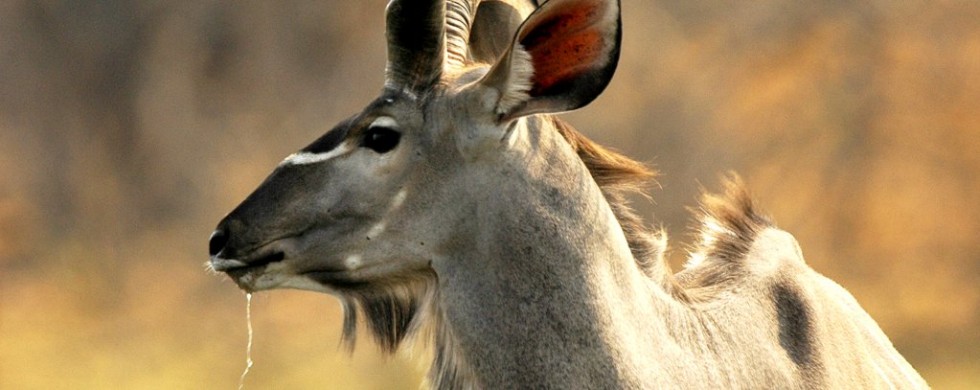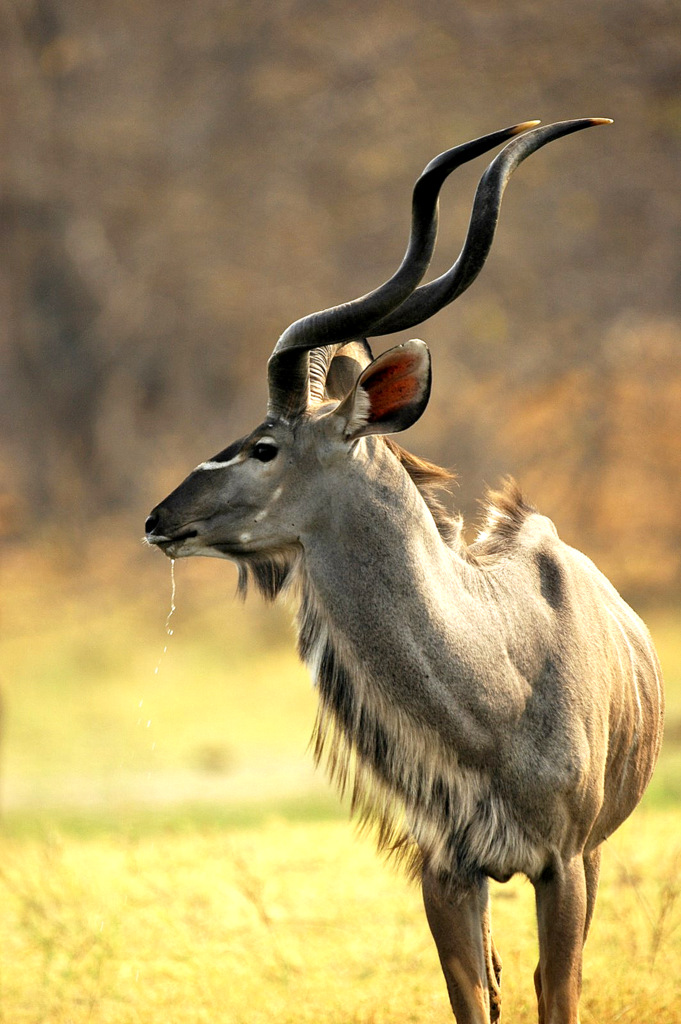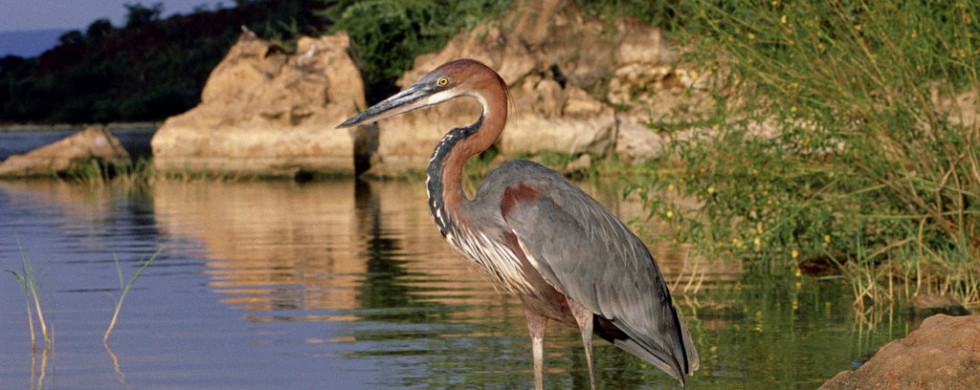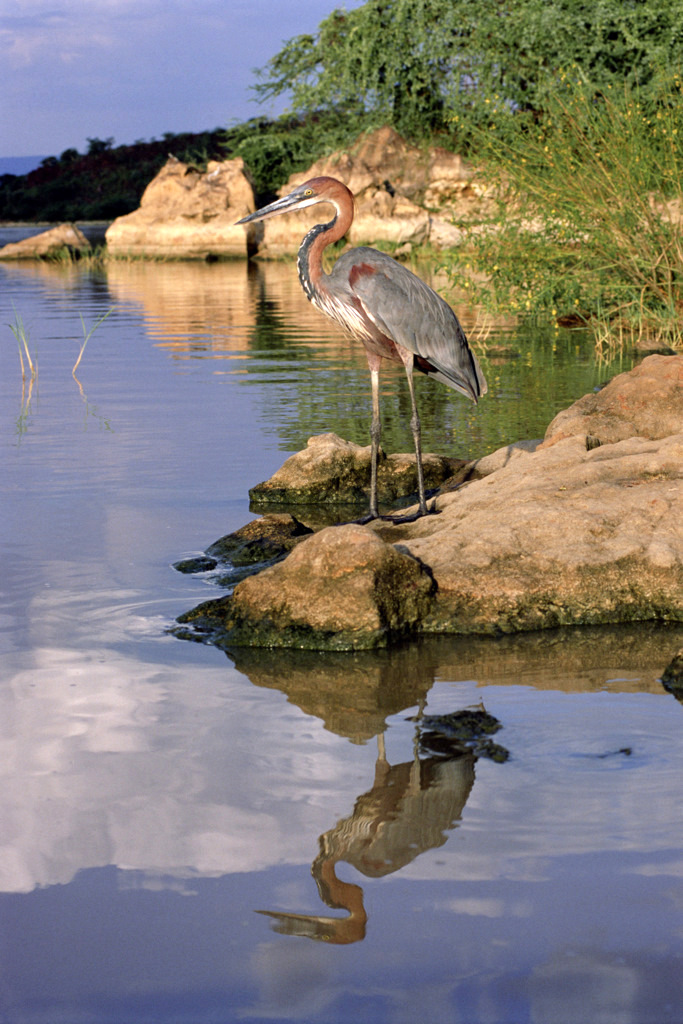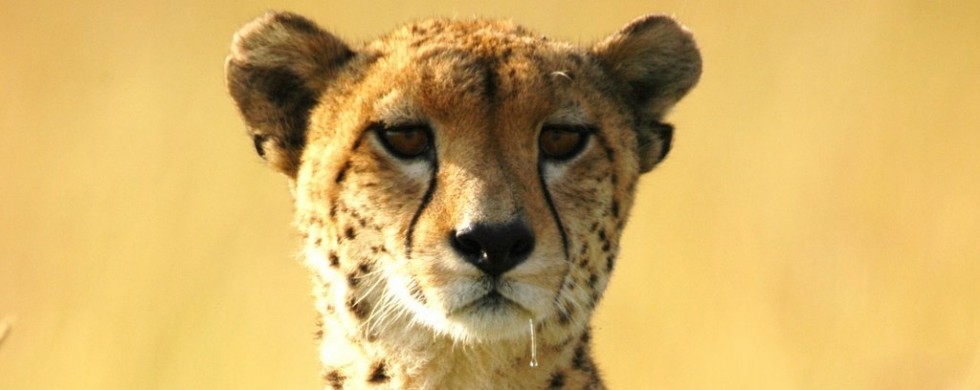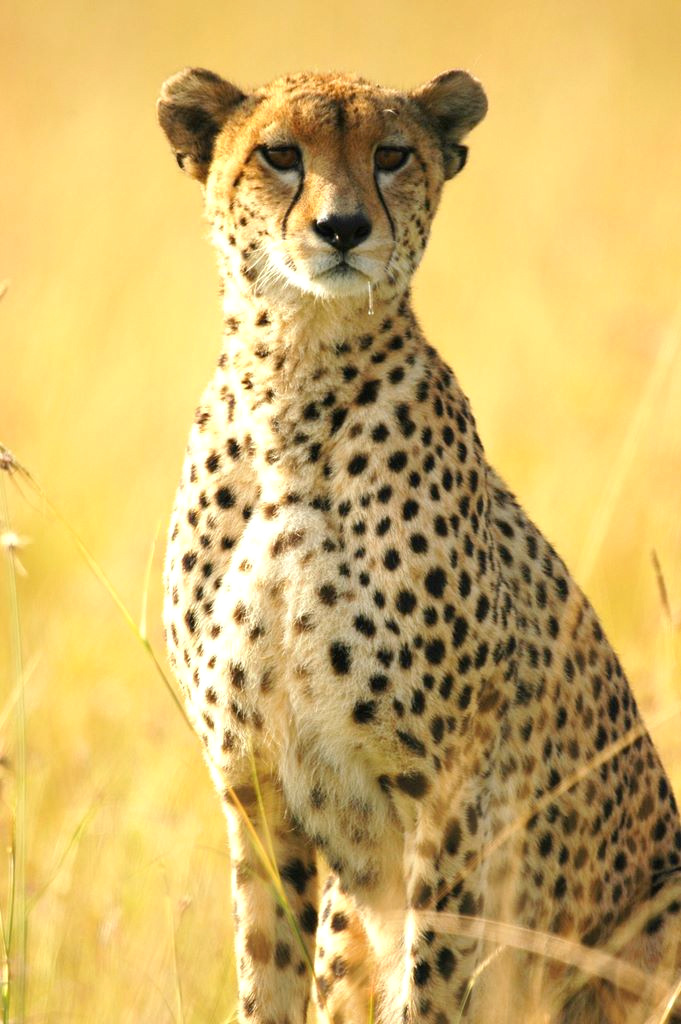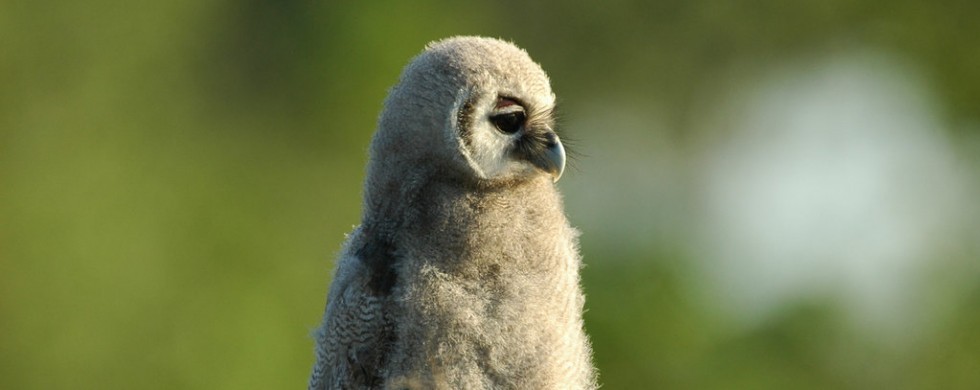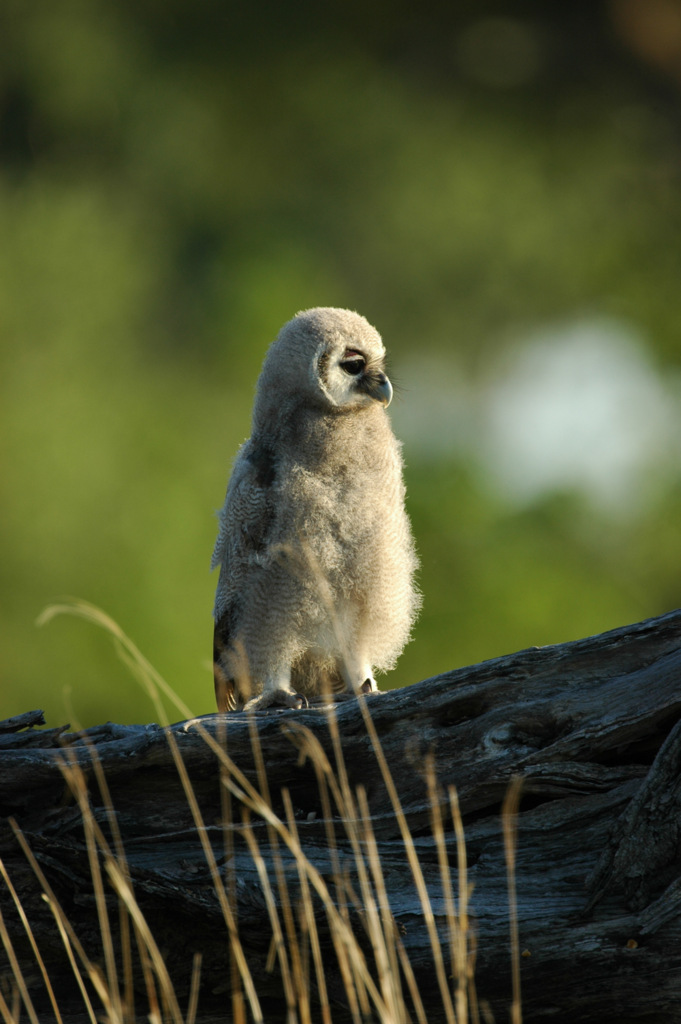15
Shot of the Month – October 2010
This month a lovely scene that pretty much speaks for itself.
Photographically I didn’t have to do much to capture this one. It was a late afternoon as we drove along the edge of Lake Nakuru. We stopped to look at some critter and when I glanced back and saw this scene, in this light, I knew we had something special. I quickly threw a bean bag on the roof of the vehicle, steadied the camera on the bean bag, and fired off a few shots. As if on cue some obliging flamingos took flight and added a nice element to the photo.
Lake Nakuru, located in Kenya, East Africa is a natural wonder in that it can attract thousands, and at times millions of flamingos to feed on algae found in the alkaline waters. During these times the lake becomes a noisy, turbulent sea of shifting waves of pink.
The lake is also home to over 400 types of bird life and the areas around the park contain an amazing diversity of wildlife including lion, leopard, giraffe, waterbuck, impala, and other assorted grass eaters. The park is also a rhino sanctuary and is home to over 100 of the prehistoric-looking beasts.
I have been to many wildlife parks in Africa and few can rival the quantity and diversity of life, and the amazing range of smells, sights, and sounds of this small jewel of a park. It is one of my favorites.
It is unclear however if this ecosystem can continue to thrive. The population of flamingos has waned in recent years and many fear that the pollution from the growing, nearby town of Nakuru and the run-off of pesticides from agricultural lands is destroying the habitat.
With the human population now at seven billion, and rising, the dilemma facing Lake Nakuru is being repeated with natural habitats across the globe as the expanding human footprint pushes other life forms onto shrinking, increasingly isolated, and fragile sanctuaries.
Until next month…
15
Shot of the Month – September 2010
The sequence of events, more often than not, went something like this.
- Hear a thunderous watery clap.
- Spin on my heels in the direction of the calamity.
- F*$%#@! (curse like a sailor)
- Watch the massive hole in the water begin to fill in as the whale slips beneath the surface
My heart sank each time I heard that sound. That sharp report signaled that I had yet again missed seeing what is really a nonsensical idea – that a fifty-foot, forty-ton humpback whale could launch 2/3rds of its body out of the water like a Polaris missile before crashing back into the ocean. This leap of credibility is called a “breach” and humpback whales seem quite adept at it.
Trying to capture a breach on “film” is one of the hardest types of shooting I have done. Even though it was summer in the Inside Passage of Alaska, it could be quite cold standing on the bow of the boat. I have a low tolerance for cold. Using a tripod or monopod to steady the camera was out of the question given the motion of the boat and the speed of the action we were trying to capture. Between the shivering body and trembling hands and the rocking boat getting a crisp shot seemed to require divine intervention. When the water was fairly calm I would sometimes lean hard against the railing trying to make myself into a human camera support. Other times when the boat rocked up and down significantly I would bend or unbend my knees, much like a surfer or skateboarder, to counter the motion of the boat. In this case, I was trying to act like a human shock absorber.
And then there was the problem of knowing where to look. We never knew when a whale might breach or from what position relative to the boat. A breach might only last 2 seconds and you had almost no time to raise your camera and start firing if you wanted to capture the breach at its peak.
The few shots we did manage were due to a few gracious whales we called “serial breachers.” Whales that breached only one time were rarely photographed because the odds of looking at the right spot out of a 360-degree angle of view were slim to none. But some energetic whales would breach 2 or 3 times in fairly rapid succession. Once a breach was spotted the captain would try and turn and point the boat in the direction of the splash and we would head in that direction. We would hold our cameras near our faces and watch and hope for a serial breach. Would we be lucky?
KAPOW! The massive beast would burst through the water and it was a real struggle to remember how to use the camera. I think my jaw literally dropped open the first few times I witnessed this stunning event. During the remaining episodes, I had a huge grin on my face while pressing as hard as I could on the shutter release.
Scientists have no idea why humpback whales breach. One theory is that breaching helps remove parasites from the skin, a form of aerobatic exfoliation if you will. Some think it might have a social meaning. Others posit that whales may breach because well, because it is just a lot of fun.
If breaching is half as much fun as witnessing the feat, then that explanation makes perfect sense to me.
Until next month…:-)
15
Shot of the Month – August 2010
Ok, all together now, “awwwwwl.” Yes, he is very cute. This image is a crowd favorite, especially among mothers.
This diminutive antelope goes by a myriad of names, or at least spellings. Steinbuck. Steinbok. Steenbuck. Steenbok. You get the idea.
Steinbuck stats:
- They only reach 18-24 inches in height at the shoulder and weigh in at about 25 pounds.
- They can go long periods of time without drinking water since they get most of the moisture they need from the plants they eat.
- Steinbuck live in two distinct clusters. In East Africa, they can be found in southern Kenya and Tanzania. In Southern Africa, they can be found in Angola, Namibia, South Africa, Swaziland, Mozambique, Zambia, Zimbabwe, and Botswana, where this photo was taken.
- When in trouble, like when fleeing the attack of African Wild Cats, Caracals, Jackals, Leopards, Marital Eagles, and Pythons, Steinbuck can take refuge in old Aardvark burrows. They also use the burrows to raise their young.
- Steinbuck live alone though there is some evidence that they may live in monogamous pairs.
- Only the males have those straight, narrow horns.
So next time you are out in the bush remember to look down – a Steinbuck just might be afoot.
Until next month…:-)
04
Shot of the Month – July 2010
I traveled to Alaska in the summer of 2009 with the goal of capturing a nice shot of a humpback whale. Eight of our twelve days in the state would be spent exploring the Inside Passage on a 60-foot boat in a constant search for the massive beasts. We spent 15 hours a day chasing whale flukes (fluke = tail, for you land lovers), traversing coves, dodging icebergs, combing islands, and navigating remote fjords in search of whales and other wildlife. I shot over 11,000 photos during the trip.
Yet, in spite of all those miles and thousands of exposures, one of my favorite shots from the journey was captured about 50 yards from our Bed & Breakfast in the town of Petersburg, the port of call for the boat we would be using in the days to come. On our very first morning, perhaps thirty seconds after we left our lodging we came across this beautiful bald eagle beside the road.
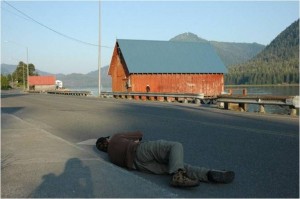 As you can see here, getting the shot required getting low – on a road. Fortunately, it was pretty early on a Sunday morning so traffic was light. My partner was supposed to be on the lookout for cars to ensure that I didn’t get run over. She obviously was not fully engaged in her primary directive.
As you can see here, getting the shot required getting low – on a road. Fortunately, it was pretty early on a Sunday morning so traffic was light. My partner was supposed to be on the lookout for cars to ensure that I didn’t get run over. She obviously was not fully engaged in her primary directive.
In some parts of Alaska seeing a bald eagle is about as exotic as seeing a robin, i.e. they are everywhere. The bald eagle has always thrived in Alaska and of the 70,000 eagles estimated to exist today over half of them live in this northern state. Bald Eagles can be found in all of the lower 48 states and some live year-round in the states along the East and West Coast, the Rocky Mountains, and the Mississippi River. Other bald eagles will migrate from Canada into the remaining U.S. states during the winter months.
Michael’s life lessons from this trip:
- While it is always good to have a goal in life to provide some general direction the happiest people in this world are those who are able to seize and appreciate what life offers along the way. I was drawn to Alaska to photograph whales but came away with a lovely shot of an American icon.
- Get up early and keep your eyes open, the greatest treasure may be just next door.
- No risk, no reward. (but use a spotter).
Until next month…:-)
15
Shot of the Month – June 2010
Last month I talked about the leopard. This month we will discuss the camelopard — the 14th-century term used by the English for 500 years for the creature we know as the giraffe. In fact, the scientific name for the giraffe, camelopardalis, comes from the early Roman name for the beast that they thought resembled a cross between a camel (general size and look) and a leopard (the spotting).
Giraffe Fun Facts:
Funny Looking Cows: Did you know that giraffes were the largest ruminants in the world? Yep, just like cows, giraffes have four stomachs and they regurgitate each mouthful several times to process it. Giraffes can often be seen chewing their cud, just like Bessie the cow on your local farm.
Neck and Neck: The six-foot neck found on your typical giraffe helps make it the tallest mammal in the world. You might imagine that they have quite a few vertebrae to keep that neck going but like all mammals, including us, they only have seven vertebrae in their neck. Seven very e-l-o-n-g-a-t-e-d vertebrae!
Big-Hearted: Literally. Pushing blood up that lengthy neck requires a powerful pump. The giraffe’s heart weighs 22 pounds and is about 2 feet long.
That First Step is a Doozy: Mother giraffes give birth standing up so newborns fall six feet, head first, to the ground. Ouch.
We Need a Bigger Crib: At birth, giraffes are 6 feet tall.
Light Sleepers: Giraffes require the least sleep of any mammal and on a given day they doze a maximum of 2 hours and may sleep as little as 10 minutes in a 24-hour period. Periods of sleep rarely last longer than five minutes at a time. Yes, they do sit on the ground to do this, resting their head on their rump.
Big Eaters: Giraffes prefer the leaves and twigs of Acacia trees. When times are good they can eat 65 pounds of the stuff in a day. If water is plentiful giraffes can drink 10 gallons at a time. When water is scarce, giraffes can go for long periods without water due to the high water content of acacia leaves.
Just Plain Big: Male giraffes can reach 18 feet in height (meaning he can look in your second-story window without stretching) and can weigh from 1,800 to 4,300 pounds. The females stand 13 to 15 feet in height and can weigh 1,200 to 2,600 pounds.
Kiss at your Peril: Giraffes have tongues that are 18 inches long to help reach far away leaves and twigs.
Cute but Deadly: The giraffe has six-foot-long legs with saucer-plate size hooves that deliver a kick that can crush the skull of a lion.
Ok, now you have all the basics on our favorite even-toed ungulate, the star previously known as camelopard.
15
Shot of the Month – May 2010
Although it is the smallest of the “Big Cats”, the leopard, shown here, may be the most successful of the group. Informally, the “big cats” are the four members of the genus Panthera and include the tiger, the lion, the jaguar, and the leopard.
Fun fact for your next party conversation: These are the only four cats that can roar.
The leopard is the ultimate survivor and is highly adaptable. Leopards have the widest distribution of any big cat and can live in jungles, woodlands, and open savannahs in sub-Saharan Africa, northeast Africa, Central Asia, India, and China. Leopards are so adaptable they are even found in the temperate forests in the Russian Far East where they endure temperatures as low as -13° F in the winter. Although rarely seen scientists believe that the global leopard population may be greater than the population of lions and cheetahs combined. Despite their relative success, most leopard populations outside of Africa are endangered due to loss of habitat.
Leopards prefer mid-size antelope as their main food source, though depending on the situation, they can survive on dung beetles, monkeys, rodents, reptiles, birds, fish, and well, you get the idea, just about anything they can catch. Correspondingly, leopard size can vary greatly depending on the nature of its diet. Males are typically 30% larger than females and can weigh from 65 to 200 pounds. Females can weigh from 50 to 130 pounds.
Leopards are the decathlon athletes of the natural world: they can reach speeds of 36 mph, have a vertical leap of 10 feet, have a horizontal leap of more than 20 feet, and are strong swimmers. Their primary hunting style is based on stealth as they move quietly through the bush and pounce on prey from a short distance. They also hunt from trees surprising their prey from above. Leopards are very muscular and pound for pound are the strongest of any cat. A leopard can carry prey 3x times its body weight into a tree.
As you can see, the diminutive leopard is in many regards the biggest of the big cats…
15
Shot of the Month – April 2010
What can weigh up to 600 pounds and has a mane?
No, try again. The male lion only weighs up to 400 pounds.
The picture is a big clue. It is the Greater Kudu.
Believe it or not, these massive antelopes are only the 2nd largest antelopes in the world. For those of you keeping score at home the largest antelope is the Eland, weighing in at up to 1,500 pounds. But that is a story for another month.
Greater Kudu can be found across a wide range of Africa. In the east, they live in Ethiopia, Tanzania, Eritrea, and Kenya. In the south, they live in Zambia, Angola, Namibia, Zimbabwe, South Africa, and in Botswana, where this photo was taken.
Kudus prefer to live in thick, wooded areas, rocky hillsides, dry river beds, and areas with lots of water. Turns out that kudu are vulnerable on the open plains as they do not run very fast and they do not have much stamina — ergo with nowhere to hide they can be easily run down by lions, leopards, and wild dogs. However, among the thick bush kudu have a better chance of success. Despite their size, kudu are excellent jumpers and a male can easily leap 8 feet or more (Picture a 600 lb antelope jumping clean over your head with a couple of feet to spare!) When pursued they simply leap over rocks and bushes that predators have a hard time navigating. And for the kudu, the best defense is a good offense, of sorts. Amongst the thick vegetation, their colorations and markings make them very difficult to see – so if they remain perfectly still they can often go undetected by carnivores on the prowl.
Despite their wide range kudu numbers are declining. Much of their habitat is disappearing as humans cut down the forests to make farmland. Hunting is also a big problem as trophy hunters prize those amazing cork-screw horns that are found only on males. At full maturity, the horns make a complete 2 ½ twist.
Alas, if humanity continues its relentless encroachment the kudu will soon have no place left to hide, and then, ironically, we will truly never see them again.
15
Shot of the Month – February 2010
Ok, you guessed it, this month we are going to talk about cheetahs. This is a glamour shot of a healthy cheetah that I found on the plains of Kenya, Africa. The allure is a bit dampened by that bit of drool, uh, just there, yeah, there on the right. At the time of this shot the cheetah and I were surrounded by thousands of zebra –perhaps this fellow was contemplating the dining bonanza before us.
Attacking an adult zebra is a daydream at best. Adult zebra can weigh from 450 to 1,000 lbs – far outside the weight class of our speedy cat. A full-grown cheetah weighs from 80 to 140 lbs and focuses on smaller prey that usually weighs less than 90 lbs often preferring Thomson’s Gazelle, Grant’s Gazelle, springbok, or the Impala. On a good day, a cheetah might go after a baby zebra or wildebeest.
No creature in the world can run as fast – cheetahs can reach speeds of 75 mph in 3 seconds flat and can cover 24 feet in a single stride. That means a cheetah can accelerate faster than any Ferrari, Porsche, or Lamborghini made today.
Virtually every aspect of the cheetah’s body has been transformed to maximize speed. They have a slender, long-legged torso very similar to that of a greyhound dog. They have semi-retractable claws – claws that cannot be fully withdrawn. The claws are therefore always in contact with the ground ensuring excellent traction acting much like a good set of track cleats. Cheetahs have large nostrils to improve oxygen intake and they have an enlarged heart, liver, and lungs to efficiently circulate oxygen throughout the body. They have small heads to lower wind resistance. An unusually flexible spine acts like a giant spring that can produce explosive surges of speed and long strides. Black “tear marks” that run from the inside corner of each eye down the side of the nose help reduce glare from the sun and improve vision (think football players with black makeup on their cheeks). Finally, cheetahs have especially long tails which act like rudders that enable them to make exceptionally sharp turns and outflank fleeing prey.
Basically, a cheetah is a supercar on paws. But so many words…. as they say, a picture is worth a thousand of ‘em…
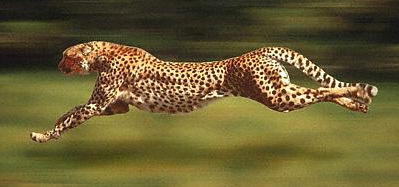 (Source)
(Source)
Now. That’s. Fast.
Until next month…:-)
15
Shot of the Month – January 2010
After only a few minutes into our morning game drive, we drove around a sharp corner and as we cleared the bend my guide slammed on the brakes. In front of us, we were startled to find a young, seemingly mesmerized owl standing on a large log.
It was like a scene out of a fairy tale. The air was cool and the morning air fresh, but still. The owl’s fuzzy down feathers were softly lit as the sun just began to rise over the horizon. The fledgling stared forward as if in deep thought or reflection.
While obviously still young, this owl was BIG. After a moment of taking this all in the questions began to cascade through my brain. What kind of owl is so big yet still so young? Why is he on a log? Why on the ground? Where are the parents? Why is he just sitting there?
I broadened my field of view to see if I could find any clues to this mystery. After a few seconds of scanning, I found two adult Giant Eagle Owls (that explains the size, they are the largest owls in Africa) high up in a nearby tree peering down at their offspring. The scene started to make sense.
This was Junior’s first flight!
He had soared down from the nest and was now on the ground trying to figure out what to do next. Our fledgling finally broke free from his meditation and turned to look up at his parents.
He opened his wings and hesitantly leapt into the air. I was startled again, this time by the width of his wing span. This was a large bird but the wing span seemed exaggerated beyond reason compared to his body size. Regardless, the motion of the wings was absolutely silent. His first effort only garnered about 6 feet and then he landed (read “crashed”) onto the trunk of a nearby tree. In parrot-like fashion, he used his beak to help climb up the tree to a higher branch. He then leapt into the air again and gained a few more feet before “landing” a bit higher in another nearby tree. He slowly zigzagged his way up to the tree where his proud parents were waiting.
What an extraordinary experience. One of my safari favorites.
A few insights from this encounter to help start the New Year:
- Get out and explore the world. (You never know what will be around the next corner)
- Wake up early. It is a magical time. (painful, yes, but magical)
- Make time to reflect (before you leap)
- Set high goals. Take small steps to reach them
- Expect a few crashes along the way, but don’t let them stop you
Happy New Year!

